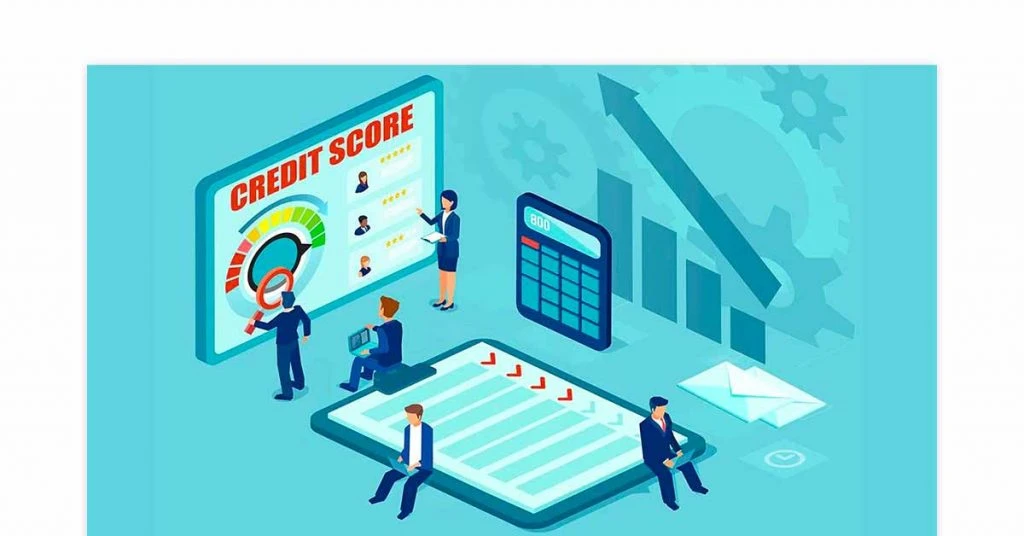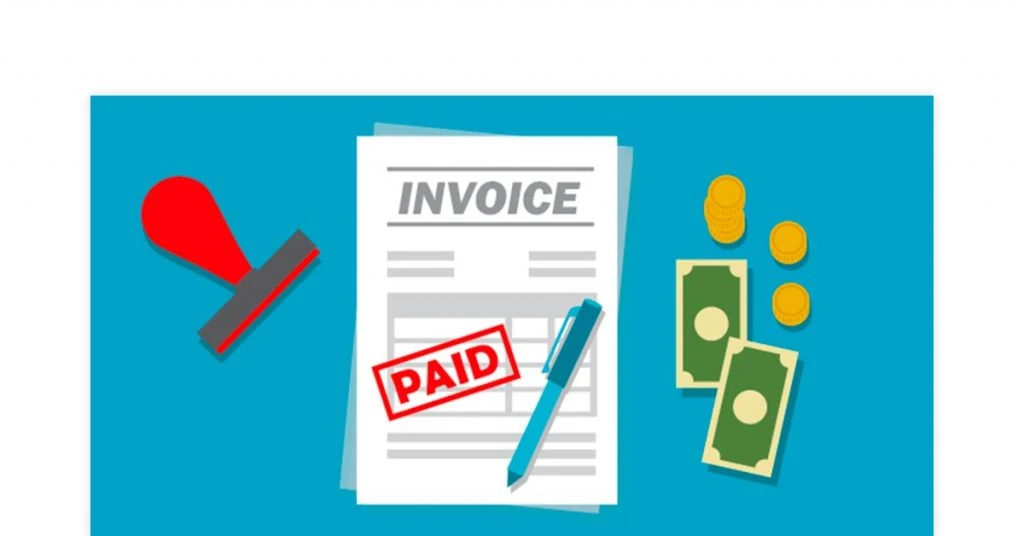What Is Credit Control & How to Improve the Credit Control Process

A quality product comes at a price. This is the reason many consumers settle for less while many enterprises lose good potential customers.
To bridge this gap, businesses need to introduce credit control. Whether you are a big or small organization, an effective credit control policy will increase your sales, expedite debt collection, and grow your consumer base.
In this article, you’ll learn everything about credit control, starting from its meaning, need, importance, process, and tips to make it effective for your business.
What Is Credit Control?
Credit Control is a business strategy that is adopted to accelerate sales of products and services by providing credit to potential or existing customers. This strategy keenly analyzes the credit history of the buyer and identifies good creditors.
The main aim of the credit control strategy is to reduce bad debts for the business, increase cash flow, and tap into a larger audience base. Extending credit to your potential customers makes it easy for them to buy your products and services.
But as a business, you should only give credit benefits to your consumers with a good credit history, unless you might eventually face bad debts.
Suggested Read: Benefits of Loan Management Software to Improve Lending Experience
What Is The Need For Credit Control Policy?
Let’s understand what the credit control policy is.
A credit control policy is a set of guidelines or parameters that your organization follows while trading on credit. Credit control policies ensure that your staff follows a consistent approach to credit and offers the best terms of credit to every potential customer.
It equips your team with a better understanding of the different actions required in different stages of the order-to-collection process. This contributes to speeding up the debt collection process.
Credit control policies of an organization should be flexible and regularly revised to align with dynamic market trends. In the end, a good credit control policy should allow your potential customers to buy more, and your staff to take a proactive approach to debt collection.
Why Consumer Credit Control Is Important?

Any fluctuation in your credit control will impact all the departments in your organization. Late payments or no payments will restrict the cash flow and have a severe impact on revenue and profits.
Therefore, the right credit control policy ensures that you trade only with customers who have a good credit history. This keeps your debt collection process smooth and keeps the cash flow coming into the organization.
Here’s how consumer credit control can be beneficial for your business.
Manage Your Cash Flow: Late or no cash flow at all can have a drastic impact on organizations. They might have to delay or stop some operations and even be forced to make salary cuts to employees. In some worst-case scenarios, businesses might have to shut down operations. So, a good credit control policy can forecast cash flow for your business.
Reduce Tedious Collections Process: Recovering long-due debts demands a separate collections team and several hours. The time spent dealing with unpaid invoices, connecting with concerned authorities, and pulling out related information is a long process that can be avoided with a well-thought-out credit control policy.
Avoid Bad Debts & Negative Professional Image: Poorly handled debts create a bad impression of the organization among customers and especially investors. You might be unable to attract new clients, investors, or customers, and eventually, run into losses.
Attain Stability: Adequate cash flow and liquidity in an organization lead to the smooth functioning of all the processes and departments. This promotes overall business growth by maximizing output and employment.
Expand Your Consumer Base: Consumer Credit Control allows you to tap into new potential customers who are willing to take your product or service. It provides an option for your prospects to avail themselves of your services without burning a hole in their pocket.
Suggested Read: Best Pharmacy Management Systems in India to Manage Daily Operations
What Are The Steps In Credit Control?
Credit control helps your organization increase its customer base and cash flow by bringing in potential buyers with good credit scores. Robust credit control policies simplify the collection process, build a positive company image, help attain stability, and tap into more consumers.
So, now, when you have understood the importance of credit control, let’s learn how does credit control works.
Steps of Credit Control Process:
Maintain 100% transparency: The credit control process ensures that your company policy is well understood by your employees as well as your customers. It includes everything like how and when to issue invoices, what action needs to be taken in case of late payment, and on what parameters you can declare a bad debt.
Monitor your debtors: Keep a keen eye on your biggest and aged debtors to start the collection process. Often, organizations follow two parameters to prioritize debtors. In the first approach, debtors are divided into three buckets, based on the number of days due for payment. The second method is to prioritize debtors based on their due amount.
Double-check the invoice: To double-check the invoice sent to the customer, you can use email tracking software, where you get notified whenever someone opens or reads the mail. You must check with the debtor on the invoice number and amount to confirm if the debtor has received the correct invoice or not. This will avoid any arguments in the future and minimize the risk of delayed payment.
Keep chasing: Always, as a preventive measure, give a heads-up to your client about the approaching due date. Make sure to mention that this is just a gentle reminder in the mail. After this set up a system, where your team follows 7 days if the payment is late, till the date when payment is made.
Improve the credit control policy: At this step, you need to check pending invoices to identify the patterns why payment is not being received on time. There can be several reasons like the credit history of the customer was not up to the standards, or there was any dispute with the client. You can identify these reasons and modify the credit control policy and process accordingly.
Suggested Read: Money Management Tips for Small Businesses
How To Improve The Credit Control Process?

Now, it’s time to make your credit control process effective to keep the cash flow coming in. We have got a handful of tips to manage credit control. Let’s have a look:
Keep & Stay Informed: Making any policy effective requires you to have a complete understanding of its nuances. It is imperative for your team and clients to have a complete understanding of the credit control policies.Being clear with your terms and conditions will help you avoid any confusion or argument. You must provide complete guidance and support to your customers to help them understand the policy thoroughly.
Know Your Customers: Knowing your customers’ credit score and payment history will help you filter those who won’t be able to pay your debt in the long run. You can identify who will pay the debt timely and who might create problems in the long run. This will help you reduce the risk of delayed payments and bad debts.
Accurate Invoicing: Invoicing is the first commercial document that requests payment from your customer. Any misinformation or miscommunication at this stage can lead to delays or no payment.So, make sure that your invoicing team issues the correct invoice to the right client with the right amount. To avoid any further issues, you must get confirmation from your client after sending the invoice.
Track Delayed Payments: Customers who have a history of delayed payments should be followed right after the due date. Constant yet polite reminders will help avoid delays, you can communicate with them to understand their reasons for late payments and consider them. This will at least help you forecast the upcoming payments.
Provide Multiple Payment Options: To get timely payments, you need to make the method of receiving payments convenient for the customer. Providing multiple payment options will help speed up the transaction.
Reward Early Payments: Rewarding early payments will encourage your customers to continue with the same trend in the future. You can provide additional benefits like reward points, discounts, or waiving off some interest for receiving early payments.
Automate the Chasing Process: Chasing delayed payments requires your collections team to keep track of every client. This can lead to errors and mistakes when done manually. However, automating the chasing process, where you are chasing the client after set time of intervals, will avoid misses and expedite the collection process.
Be Flexible: With changing market trends and the approach of customers, you need to be flexible with your credit control policies. When required, you must modify the terms and conditions, penalties, rewards, etc., making your policies beneficial for both the company and your customers.
Build a Healthy Working Relationship: When we talk about chasing your customer or speeding up the debt collection, it doesn’t mean that you need to threaten them. Ensure that your mail and calls sound polite and courteous. Clear and humble communication with your client will build a positive relationship, and they will even make efforts to maintain the same.
Trust the Entrepreneur Inside You: It is in the nature of payments to get delayed. But sometimes the reasons can be real and justified. In that case, you need to listen to your customers, ask them to provide supporting documentation and take the best action for both ends.
Suggested Read: Best Free Accounting Apps for Small Business & Bookkeeping
What Are The Best Credit Control Examples?

There are several examples where organizations have outsourced credit control services and recovered their pending debts.
For instance, a UK-based gas and renewable energy supplier hired a debt collections agency to recover debt for almost 100 cases. The main reason they decided to outsource was internal chaos. A lot of time of their team was spent chasing. The agency took the matter into their hands and understood the nuances.
The collections agency identified the main reason behind delayed payments, which was the company was trying to do everything manually. There were many customers who received wrong invoices, were not given timely reminders, and some even went missing.
They started by filtering and classifying debtors and created customer profiles based on the time and amount of payment due. Next, they automated the process of sending reminders, so that no client is missed. Eventually, the agency started payment tracking and the recovery began.
Now let’s have a look at yet another example from the construction industry. An organization faced serious cash flow issues because of its poorly managed credit control process. A debt collection agency analyzed that 32% of their customers sent payments 250 days after the due date.
So, now their target was to get maximum cash in the organization, as soon as possible. To achieve this, the agency made phone calls a priority. They became proactive in communicating with the customer and made their chasing cycle fast and effective.
As a result, they saw significant improvement in a few weeks and steadily started receiving payments. To avoid a similar situation in the future, they went to the roots of credit control policy and added a clause to penalize customers on late payments.
Conclusion
Organizations can’t expand without a credit policy, but it is equally important to keep the process intact. Gaining and providing complete clarity on credit control policies, right invoicing, automating timely reminders, and frequent chasing is the only way out to keep the cash flow coming while increasing the consumer base and sales.
FAQs
What is the meaning of credit control in banking?
Credit control in banking is the lending strategy adopted by banks to provide loans to customers with a good credit history.
What is credit control policy?
A credit control policy is a set of protocols that an organization follows while trading on credit. It includes the parameters to judge a good creditor, the amount of credit that can be provided, action plan or penalties for due payments, and rewards for early payments.
Is credit control legit?
Yes, credit control is legit. There are legit agencies that help you in getting your credit control process on track by speeding up the chasing cycle and identifying the reason for delayed payments.
What is the difference between credit control and credit management?
Credit control is the initial stage that confirms that you and your client have agreed upon the policies of credit trade. However, credit management is the next stage that ensures timely payments.
How to Manage Credit Control?
To manage credit control, ensure complete transparency in policies, engage in accurate invoicing, give timely reminders for due dates, keep chasing at timely intervals, and penalize late payments.
Who can use credit control?
Manufacturers, retailers, financial institutions, banks use this strategy for trading on credit and granting loans.
Explain the types of credit control?
There are two types of credit control:
1. Quantitative Method: It includes bank rate policy, open market operations, variations in reserve ratio, repo.
2. Qualitative Method: It includes fixation of margin, regulation of consumer credit, moral suasion, credit rationing, etc.
Related Categories: Financial Management Software | Asset Management Software | Fixed Asset Management Software | Investment Management Software | Loan Management Software
Isha’s writing journey started way back in 2018 when she graduated in the field of Journalism & Mass Communication. Since then, she has been writing for all digital and print marketing assets including blogs, editorial reviews, landing pages, emailers, and more. She has contributed her writings to genres... Read more




























